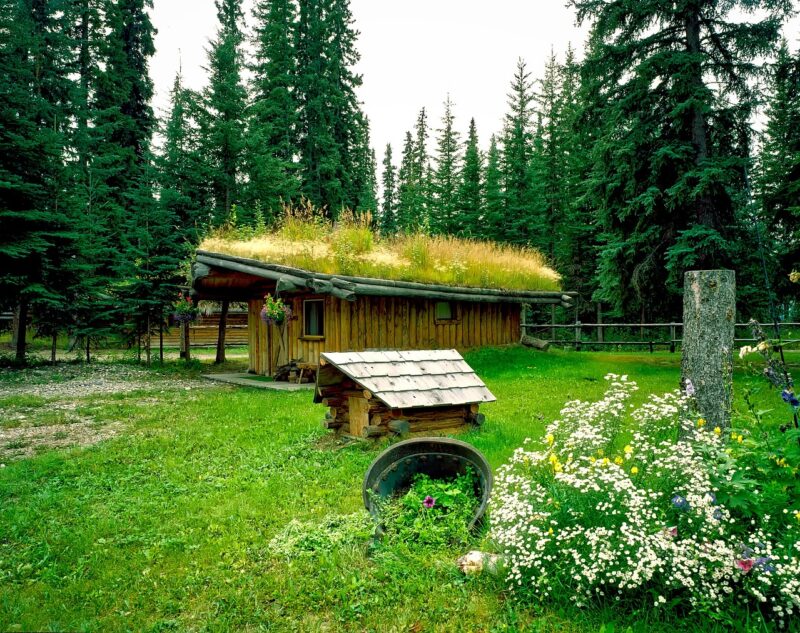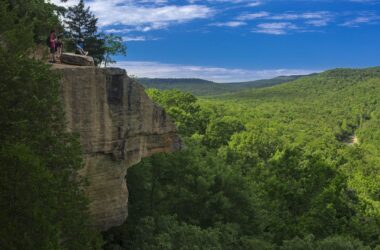Best Time to Visit Alaska: Alaska is a breathtaking destination that offers endless possibilities for adventure, sightseeing, and outdoor activities. With its rugged mountains, glacial valleys, and diverse wildlife, Alaska is a year-round travel destination. However, the best time to visit Alaska depends on what you want to see and do, as well as your personal preferences. In this article, we will discuss the best time to visit Alaska, depending on various factors such as weather, activities, and budget.
Summer Season (June-August)
The summer season is the most popular time to visit Alaska, as it offers the warmest weather, long daylight hours, and a wide range of outdoor activities. The summer months in Alaska are from June to August, and during this time, the average temperature ranges between 55°F to 78°F (13°C to 25°C).
If you are looking to explore the natural beauty of Alaska, then the summer season is the perfect time to do so. You can go on hiking trails, fishing trips, wildlife tours, or take a scenic drive along the Alaska Highway. The warm weather during the summer season also makes it the best time to visit Alaska’s glaciers, such as the famous Mendenhall Glacier, which can only be accessed during this time of year.
One of the most popular summer activities in Alaska is fishing. You can catch salmon, halibut, and trout during this time, and there are plenty of fishing charters available. If you are interested in wildlife, then the summer season is also the best time to spot grizzly bears, moose, and caribou, among other animals.
However, since the summer season is the most popular time to visit Alaska, it is also the busiest and most expensive time of the year. Accommodations and tours tend to book up quickly, and prices can be higher than at other times of the year. Therefore, it is recommended to book your trip in advance if you plan to visit Alaska during the summer season.
Fall Season (September-October)
The fall season in Alaska is from September to October, and it is a great time to visit if you want to avoid the crowds and experience the fall colors. The temperature during this time ranges from 30°F to 60°F (-1°C to 15°C), making it a bit cooler than the summer season. However, the fall season in Alaska is still relatively mild compared to other parts of the world.
The fall season is an excellent time to visit Alaska for photography enthusiasts, as the fall colors are in full bloom during this time. You can capture stunning photos of the colorful trees, mountains, and wildlife against the backdrop of the clear blue sky.
Additionally, the fall season in Alaska is the best time to view the Northern Lights, also known as the Aurora Borealis. The Northern Lights can be seen in Alaska from September to April, but the best time to see them is from September to November when the weather is relatively clear.
Although the fall season in Alaska is less crowded than the summer season, it is still a popular time for tourists. Therefore, it is recommended to book your accommodations and tours in advance to ensure availability and avoid higher prices.
Winter Season (November-March)
The winter season in Alaska is from November to March, and it is the best time to visit if you want to experience a winter wonderland. The temperature during this time ranges from 0°F to 30°F (-18°C to -1°C), and there is a lot of snowfall.
If you are looking to experience winter sports and activities, then the winter season is the best time to visit Alaska. You can go skiing, snowmobiling, dog sledding, and ice fishing, among other activities. The winter season is also the best time to view the Northern Lights, as the sky is usually clear, and there is minimal daylight, making the aurora visible for longer hours.
One of the most popular winter activities in Alaska is dog sledding, which is a unique and exciting way to experience the Alaskan wilderness. You can go on a guided dog sledding tour and experience the thrill of being pulled by a team of huskies through the snow-covered terrain.
The winter season is also the best time to visit Alaska if you want to experience the Iditarod Trail Sled Dog Race, which is an annual long-distance sled dog race held in March. The race covers over 1,000 miles from Anchorage to Nome and is considered one of the most challenging sporting events in the world.
However, it’s essential to note that the winter season in Alaska can be extremely cold, with temperatures dropping below freezing. It’s important to dress warmly and prepare for the weather if you plan to visit during this time.
Spring Season (April-May)
The spring season in Alaska is from April to May, and it’s a transitional period between winter and summer. The temperature during this time ranges from 20°F to 50°F (-6°C to 10°C), and there is still snow on the ground.
The spring season is a great time to visit Alaska if you want to avoid the crowds and experience the beauty of nature awakening after the winter season. The flowers start to bloom, and the wildlife comes out of hibernation during this time.
One of the most popular spring activities in Alaska is skiing, as many ski resorts offer discounted rates during the shoulder season. You can also go on a wildlife tour and see animals such as bears, moose, and caribou, as they start to come out of hibernation.
The spring season is also the best time to visit Alaska if you want to experience the Yukon Quest, which is an annual sled dog race that covers over 1,000 miles from Whitehorse, Yukon, to Fairbanks, Alaska. The race takes place in February and is considered one of the most challenging dog sled races in the world.
Additionally, the spring season is an excellent time to visit Alaska if you’re interested in cultural events and festivals. The Alaska Folk Festival is held in Juneau in April, and the Alaska Native Heritage Center in Anchorage offers various events and performances throughout the spring season.
Conclusion
In conclusion, the best time to visit Alaska depends on your preferences, interests, and budget. The summer season from June to August is the most popular time to visit, as it offers the warmest weather and a wide range of outdoor activities. The fall season from September to October is an excellent time to visit if you want to avoid the crowds and experience the fall colors and the Northern Lights. The winter season from November to March is the best time to visit if you want to experience winter sports and activities, the Iditarod Trail Sled Dog Race, and the Northern Lights. The spring season from April to May is a transitional period between winter and summer, and it’s a great time to visit if you want to avoid the crowds and experience the beauty of nature awakening after the winter season.
No matter when you decide to visit Alaska, it’s essential to plan ahead and book your accommodations and tours in advance to ensure availability and to avoid higher prices. With its breathtaking natural beauty, diverse wildlife, and endless opportunities for adventure and exploration, Alaska is a destination that you won’t soon forget.
similar Articles
Frequently Asked Questions About the Best Time to Visit Alaska
Q: What is the best time to visit Alaska to see the Northern Lights?
A: The best time to see the Northern Lights in Alaska is during the winter season, from November to March when there are long hours of darkness and clear skies.
Q: What is the best time to visit Alaska for whale watching?
A: The best time to visit Alaska for whale watching is during the summer season, from May to September when humpback whales and orcas migrate to Alaska’s coastal waters.
Q: What is the best time to visit Alaska for fishing?
A: The best time to visit Alaska for fishing is during the summer season, from June to August, when the salmon runs are at their peak.
Q: What is the best time to visit Alaska for hiking?
A: The best time to visit Alaska for hiking is during the summer season, from June to August, when the trails are accessible and the weather is the most favorable.
Q: What is the best time to visit Alaska to avoid crowds?
A: The best time to visit Alaska to avoid the crowds is during the fall season, from September to October, when the summer crowds have left, and the winter crowds have not yet arrived.
Q: What is the weather like in Alaska?
A: The weather in Alaska varies depending on the season and the location. Generally, the summers are mild and pleasant, while the winters are cold and snowy. It’s essential to check the weather forecast before traveling to Alaska and pack accordingly.
Q: What are some must-see attractions in Alaska?
A: Some must-see attractions in Alaska include Denali National Park, Glacier Bay National Park, the Kenai Fjords, and the Northern Lights.
Q: Is it expensive to travel to Alaska?
A: Traveling to Alaska can be expensive, especially during the peak season. It’s essential to plan ahead, book in advance, and budget accordingly. However, there are also budget-friendly options available, such as camping and budget accommodations.
Q: Is it safe to travel to Alaska?
A: Yes, Alaska is generally a safe destination for travelers. However, it’s always important to take necessary precautions and follow local safety guidelines, especially when participating in outdoor activities.
Q: What are the transportation options for getting around Alaska?
A: The main transportation options for getting around Alaska include rental cars, buses, trains, and planes. Each option has its advantages and disadvantages, and it’s important to consider your budget and travel preferences when deciding which option to choose.
Q: What should I pack for a trip to Alaska?
A: What you should pack for a trip to Alaska will depend on the season and the activities you plan to do. Generally, it’s recommended to pack warm layers, waterproof clothing, sturdy shoes or boots, and insect repellent.
Q: Do I need a visa to travel to Alaska if I’m from outside the United States?
A: If you’re from outside the United States, you may need a visa to travel to Alaska, depending on your country of origin. It’s important to check the visa requirements and apply well in advance of your trip.
Q: Can I see wildlife in Alaska?
A: Yes, Alaska is home to a diverse range of wildlife, including bears, moose, caribou, wolves, and whales. It’s important to follow local guidelines and maintain a safe distance from wildlife to ensure your safety and the animals’ wellbeing.
Q: Are there any cultural events or festivals in Alaska?
A: Yes, there are several cultural events and festivals in Alaska throughout the year, including the Alaska Folk Festival, the Alaska Native Heritage Center, and the Anchorage Fur Rendezvous.
Q: What are the accommodations options in Alaska?
A: The accommodations options in Alaska include hotels, motels, lodges, bed and breakfasts, cabins, and camping. It’s important to book in advance, especially during the peak season, to ensure availability and avoid higher prices.
Q: Can I visit Alaska on a budget?
A: Yes, it is possible to visit Alaska on a budget by choosing budget-friendly accommodations, participating in free or low-cost activities, and cooking your meals instead of eating out. It’s important to plan ahead and budget accordingly to make the most of your trip while staying within your means.









